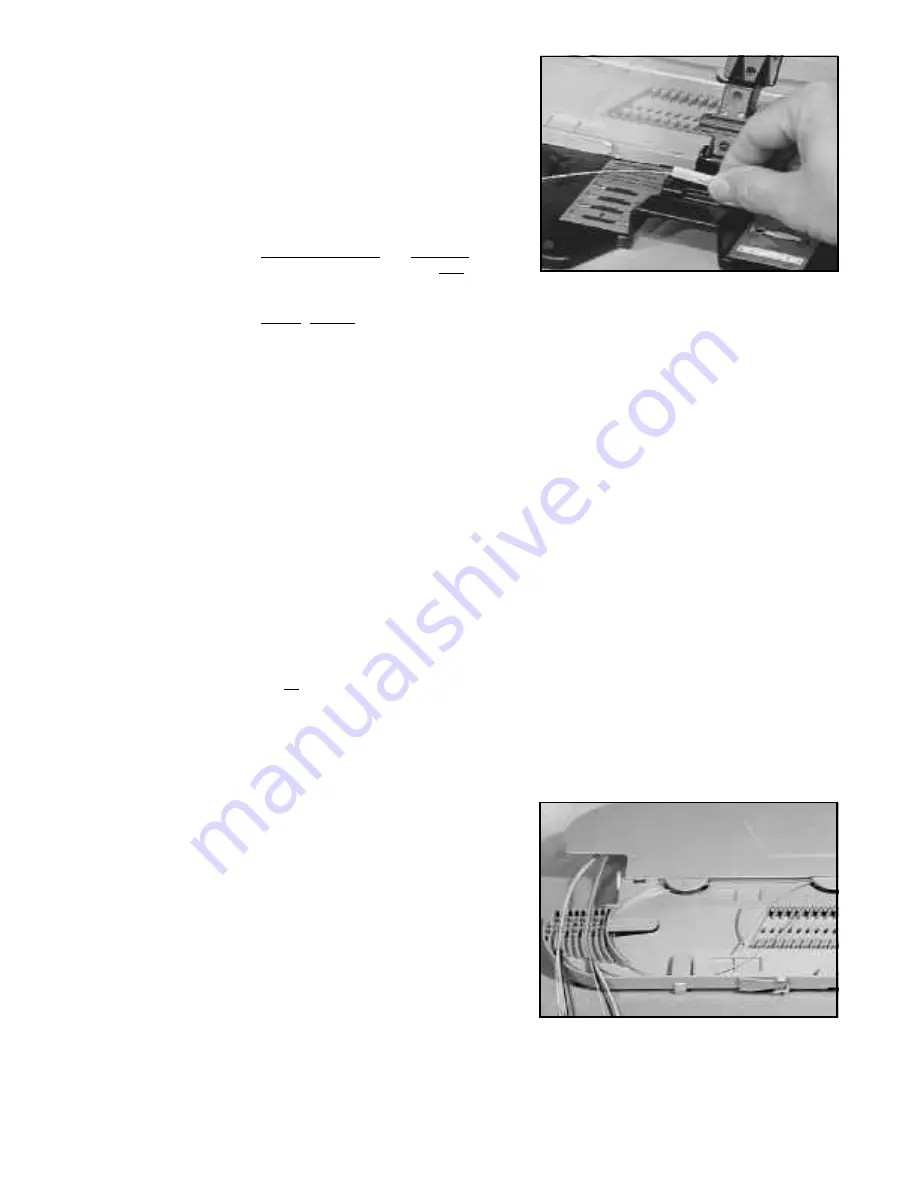
4.09 Remove the Fibrlok Splice from the Assembly Tool by first
removing the fibers from the foam retention pads and then
lifting the splice from the splice holding cradle.
Note:
Do not attempt to “tune” or optimize the splice as
this may result in higher splice loss. Fibrlok splices
optimize fiber alignment within the metal element
inside the splice when properly installed per the
previous instructions.
If fiber bows are NOT observed as described, repeat
steps 4.02 - 4.07 of Splice Assembly but DO NOT
fully remove fibers from splice. If bows are still not
observed, remove fibers, strip, and recleave
checking for proper cleave length. Resplice per
splicing procedure using_a_new splice.
In the event a splice must be refabricated, simply cut
the fibers at each end of the splice (this will remove 1
1/2" of fiber from the loop) and resplice per
instructions. Splice refabrication will require a
length of 2 inches on each fiber.
DO NOT REUSE FIBRLOK SPLICES.
5.0 Fiber Organization and Splice Storage
When storing fiber slack in a splice tray, the spliced fiber
ends will twist one full turn for each full loop of fiber being
stored. This rotation places stress on the fibers. This
rotational stress makes fiber organization more difficult and
may affect fiber/splice performance, particularly in 900 µm
coated fibers. The stiffness of the 900 µm fiber does not
distribute this stress in the same manner as 250 µm coated
fiber. The following procedure is strongly recommended
when splicing 900 µm coated fibers and will improve fiber
organization when splicing all fiber types.
5.01 Secure the buffer tubes of the fibers to be spliced to the tray
so that the fibers are free to rotate through the point of
attachment.
5.02 Select the first two fibers to be spliced and lay them into the
tray. Trim the fibers so they are the right length for splicing
plus approximately 1 to 2 inches (2.5 to 5 cm) for fiber end
preparation.












